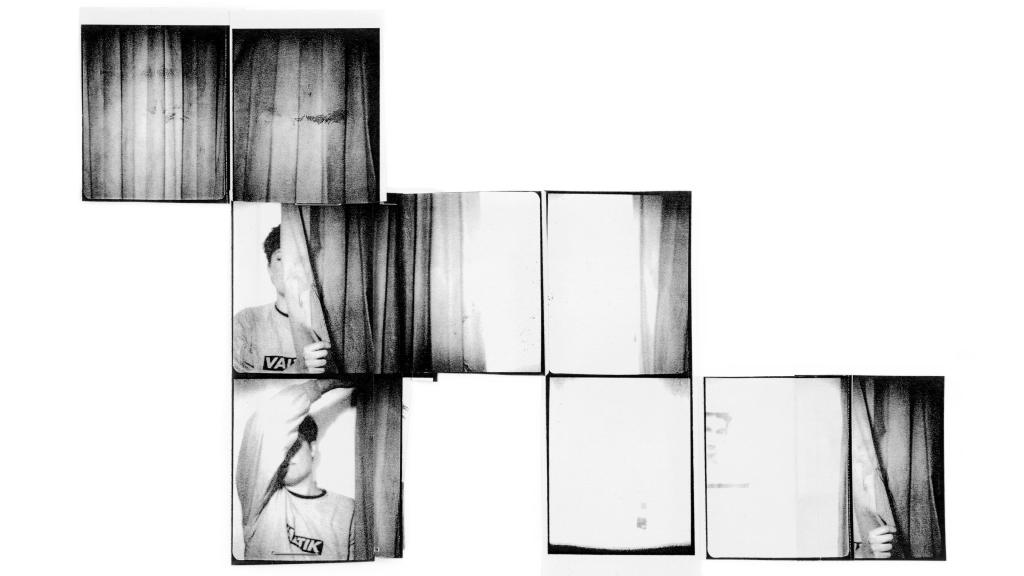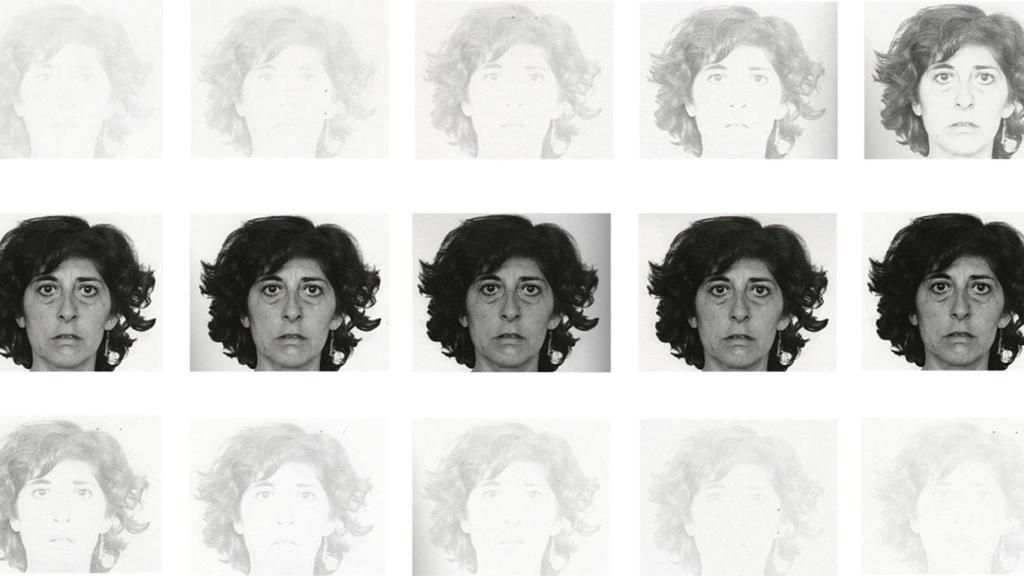A century ago, in September 1925, Anatol Josepho, a cosmopolitan photographer of Siberian origin, installed his first three automated photo booths in Manhattan, the Photomaton: 25 cents and eight minutes of waiting with a reward of eight photographs. The success of the device was so enormous who already in 1927 sold his farm in the United States for one million dollars.
In 1928, the photo booth arrived in Paris. Excited by its parallelism with automatic writingAndré Breton called it a “system of psychoanalysis through the image” and put it at the service of the cohesion of the surrealist group by inviting its components and associates to look at each other, without an intermediary, in that surprising chamber.
From that parade was born the first artistic use of the photo booth: the famous collage of portraits with closed eyes that surround, as if in a dream, a painting by Magritte with the words “I do not see the woman hidden in the forest”, reproduced in the latest issue of The Surrealist Revolution.
Its echoes reach today. Rafael Soldi, Peruvian, homosexual and migrant, in 2018 assimilated the photo booth to a confessional, a refuge for introspection: in Imagined futures He also repeatedly photographed himself with his eyelids closed, visualizing the vital drifts that could have opened in other circumstances.
And Susan Hiller, with the series Midnightfrom the eighties but clearly in the surrealist wake, he furtively entered photo booths where he barely saw what images he would produce; Then, he would cover the blurry effigies, enlarged and overpainted, with an automatic writing that he called “cryptolinguistic marks”.

María Tinaut: ‘Photo Booth self portraits (Babe’s bar, Richmond, Virginia)’, 2015-2018. Photo: María Tinaut
Compared to the current predominant use—obtaining identifying photographs for documents that subject us to police control—for decades the photo booth, apart from making portraits for the popular classes who could not afford to go to the professional studio, had recreational and recreational purposes.
The curtain that hid its interior provided an unprecedented freedom. Back in the 1950s, Woolworth stores removed the closure because some customers, often women, They took advantage of it to photograph themselves naked.
And so, without clothes, Richard Avedon had Marilyn Monroe pose in the set of portraits, “25c a Celebrity”, which he commissioned from the magazine. Esquire, in 1957, with a photo booth installed in his studio. Before him, the photographer Willy Michell had one of those first French photo booths, in whose booth he posed, starting in 1928 and for more than two decades, alongside all Paris.
Hundreds of those double portraits are preserved that presage the collecting of selfis with famous people and cause some discomfort due to the excessive closeness of your face to that of the models and for their somewhat vampiric attitude.
Vito Aconcci: ‘Photomatic Enunciation Piece (“Anything Goes”), 1969. Foto: The Horace W. Goldsmith Foundation Gift, through Joyce and Robert Menschel, 1994 © Vito Acconci
And it couldn’t fit: the photo booth was designed for a single user. But group portraits quickly became popular, reinforcing the identity of the group or couple. There, forbidden relationships were also visually sealed: those of clandestine lovers, especially homosexualswho found in it a space safe from police complaints and social disapproval. In that minimal, semi-private room, they were also able to express their love and desire, as reflected by Elmgreen and Dragset in the sculpture Photo Booth (2004).
With such nuances, it is not surprising that Andy Warhol felt attracted to the photo booth, which fit so well into his strategies for mechanizing the image and monumentalizing popular culture. In 1963 he published in Harper’s Bazaar some portraits taken in photo booths and, the following year, he made the collector Ethel Scull wander from one to the other until she found the one that gave her the best contrast; With the photos thus obtained he produced a multiple portrait, in silkscreen, which marked a caesura in his portraiture. At those moments he also made, from photo booth strips, self-portraits with which he underlined his own category of icon. for a few months there was a photo booth at The Factory; then he opted for polaroids.
Warhol’s example was followed in the sixties by other artists who experimented in the self-portrait genre with a hybridization of photography and painting. Francis Bacon painted distorting portraits and self-portraits with these automated photos as models, and Gerhard Richter, in numerous works, used passport photographs to paint portraits, single or multiple, in black and white: the first of this type is that of the gallery owner Alfred Schmela, from 1964.
Arnulf Rainer directly intervened in the enlargements he made from the photo booth at the beginning of his series Face Pranks, with spasmodic mimicry and gestural strokes. At the same time, Katharina Sieverding, in the project carpet, He used the booth at the door of the club where he worked as a studio: his long exploration of self-portraits and his first major work were developed there. Stauffenberg-Block, with large extensions, solarized and dyed red, in which they paid tribute to the officer who attempted assassinate Hitler in 1944.
The self-portrait is closely related to questions about identity, and the photo booth has been a great little testing laboratory in that field. All of Cindy Sherman’s influential costume work has its origins in a photo booth where she posed as Lucille Ball (1975) but, before her, Lee Godie, artist outsider who lived on the streets of Chicago, characterized himself in a thousand ways like the one at the bus station, later retouching the photos—an overwhelming set—with pen and color. As in your case, they are the repetition/accumulation and the more or less scheduled succession that document or construct the changing identity.
Artists like Verdi Yahooda, since the seventies, or Tomoko Sawada, Anne Deleporte and Juan Pablo Echeverri, since the nineties, have been faithful to the photo booth, with which they have questioned social conventions and have exercised durational self-dramatization.

Detail of ‘Self-portrait in time’, by Esther Ferrer. Photo: 1 Mira Madrid / 2 Mira Archive
With a more conceptual desire, Esther Ferrer made in 1973 some collages graduates Antigua, with some photo booth self-portraits, modified, which he would return to in later works to analyze the effect of time on the face and personality. The concealment behind the curtain favored the “performance” of the model from the beginning, something that led to the performative uses of the machine from the 1960s onwards. Vitto Acconci, in what he called “a piece of photomatic enunciation,” sang Anything Goes of Cole Porter in a photo booth, letting the camera cut to his extreme vocalization.
But perhaps the great entry of the performative photo booth into the art scene took place at the 1972 Venice Biennale, when Franco Vaccari installed one with instructions for visitors to take a self-portrait and install the strips in the room. The following year, with a similar “photographic happening” character, Carlos Serrano and Pablo Pérez Mínguez, in the exhibition closed games, They took one of these machines to the Sala Amadís and, in 1993, Eduardo Arroyo tuned another one so that those attending his exhibition Retromaton in the Gamarra and Garrigues gallery they obtained a “portrait” in black silhouette for a coin signed by the artist.
The photo booth camera It does not move and the space it covers is always the same. But there have been those who have challenged these limitations through the movement of the subject and playing with the fragmentation imposed by the frame. Since 1969, in New York, Jared Bark has done extensive research on these formal issues. His compositions they create new figures, broken and remadeor they achieve photographic minimalism by focusing on the empty booth, the background and the lights, by blocking the lens or by sticking their back to it.
Something similar was done later by the Frenchman Alain Baczynsky and, more recently, by the Spanish María Tinaut, who has used the photo booth a lot in an unconventional way and has also taken advantage of the vertical sequence format to create narratives. less biographical than “metavisual”, sometimes cinematic air.
In effect, this machine has also established some stylemas. Sequentiality, bust format, frontality and inexpressiveness that is required of identifying portraits have had artistic echoes. Thus, Thomas Ruff, in those first portraits of the eighties that earned him fame, emulated the “photo booth aesthetic” on a large scale.
And in one of his best-known works, Album, In 2003, Gillian Wearing masked herself to reconstruct a teenage photo booth self-portrait; Some issues already discussed such as theatricalization or changing identity come together in it, and it leads all of us who are a few years old to remember that old photo in which we see ourselves very alone and abnormally serious in front of the silent photographic robot.
The post This is how artists have used it, from Andy Warhol to Gillian Wearing appeared first on Veritas News.
